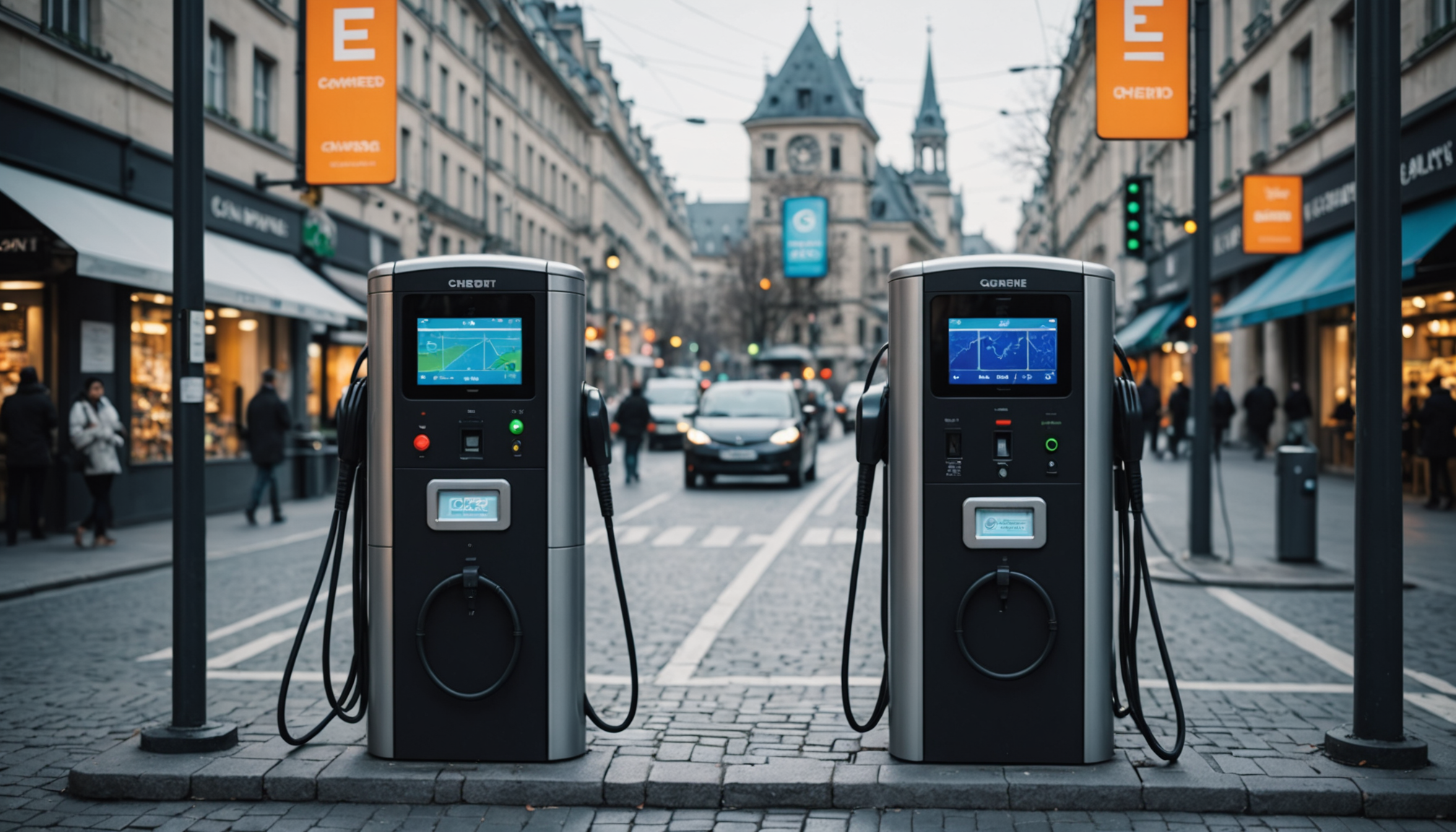
Global EV Charging Smart Grids Market Report with Emphasis on Sustainable Development Goals (SDGs)
Market Overview
The Global EV Charging Smart Grids Market was valued at US$ 1.2 billion in 2022 and is projected to reach US$ 10.1 billion by 2030, exhibiting a compound annual growth rate (CAGR) of 30.0% during 2024-2031. This rapid growth aligns with multiple Sustainable Development Goals (SDGs), particularly SDG 7 (Affordable and Clean Energy), SDG 9 (Industry, Innovation and Infrastructure), and SDG 13 (Climate Action), by promoting clean energy infrastructure and sustainable industrial innovation.
Market Insights and Analysis
DataM Intelligence provides a comprehensive analysis of the EV Charging Smart Grids Market, highlighting key trends, growth opportunities, and challenges. The report integrates qualitative and quantitative research methodologies to deliver actionable intelligence, enabling stakeholders to make informed decisions in support of SDG 11 (Sustainable Cities and Communities) and SDG 12 (Responsible Consumption and Production).
EV Charging Smart Grids Market Landscape
EV charging smart grids combine electric vehicle charging infrastructure with advanced digital grid technologies to optimize energy distribution, manage demand, and enhance grid reliability. These systems utilize real-time data, automation, and renewable energy sources to balance electricity loads and support bidirectional charging, allowing EVs to supply power back to the grid. This innovation supports SDG 7 by increasing access to clean energy and SDG 13 by reducing greenhouse gas emissions.
Industry Trends and Market Potential
- On 31 May 2023, India’s National Investment Promotion and Facilitation Agency set a target for 30% of vehicles on the road to be electric by 2030, driven by decreasing battery costs, accelerating the adoption of EV charging smart grids. This initiative supports SDG 11 and SDG 13.
- On 29 July 2022, NITI Aayog announced the extension of the FAME 2 scheme with subsidies up to 50% and proposed a battery swapping policy, fostering innovation and sustainable infrastructure development in line with SDG 9.
- On 8 June 2023, Delta in Germany joined the Smarter EV Charging initiative in Europe, promoting energy solutions for a low-carbon electricity grid, advancing SDG 7 and SDG 13.
Key Market Players
- ABB Ltd.
- ChargePoint Inc.
- EVgo Services LLC
- Schneider Electric
- Blink Charging Co.
- Toshiba Corporation
- Mojo Mobility Inc.
- General Electric
- Robert Bosch GmbH
- Chargemaster plc
Research Methodology
The market research employs a dual-source approach combining primary and secondary data collection. The analysis considers regulatory frameworks, government policies, market conditions, competitive intensity, technological innovations, and emerging industry developments. This comprehensive methodology ensures alignment with SDG 17 (Partnerships for the Goals) by fostering collaboration and knowledge sharing across sectors.
Market Segmentation
- By Charging Station Type: Public Charging Stations, Private Charging Stations
- By Technology: Vehicle-To-Grid Technology (V2G), Vehicles-to-Everything (V2X)
Regional Market Analysis
- North America: U.S., Canada, Mexico
- Europe: U.K., Italy, Germany, Russia, France, Spain, The Netherlands, Rest of Europe
- Asia-Pacific: India, Japan, China, South Korea, Australia, Indonesia, Rest of Asia Pacific
- South America: Colombia, Brazil, Argentina, Rest of South America
- Middle East & Africa: Saudi Arabia, U.A.E., South Africa, Rest of Middle East & Africa
Frequently Asked Questions
- Who are the market leaders and what is their competitive positioning in terms of capacity, performance, and profitability?
- What growth opportunities and challenges do vendors face in the EV Charging Smart Grids market?
- Which market segments exhibit the highest growth potential and market share?
- What are the key drivers and restraints affecting market growth?
- What are the dominant sales and distribution strategies within the industry?
Conclusion
The EV Charging Smart Grids Market is a critical component in achieving multiple Sustainable Development Goals by fostering clean energy adoption, sustainable infrastructure, and climate action. Stakeholders are encouraged to leverage the insights provided by DataM Intelligence to contribute to a sustainable and resilient electric mobility ecosystem.
Contact Information
Company Name: DataM Intelligence
Contact Person: Sai Kiran
Email: Sai.k@datamintelligence.com
Phone: +1 877 441 4866
Website: https://www.datamintelligence.com
1. Sustainable Development Goals (SDGs) Addressed or Connected
- SDG 7: Affordable and Clean Energy
- The article discusses EV charging smart grids that optimize energy distribution and integrate renewable energy sources, which aligns with ensuring access to affordable, reliable, sustainable, and modern energy for all.
- SDG 9: Industry, Innovation and Infrastructure
- The development and deployment of advanced digital grid technologies and vehicle-to-grid (V2G) innovations support resilient infrastructure and foster innovation.
- SDG 11: Sustainable Cities and Communities
- Promotion of electric vehicles and smart grids contributes to sustainable urban transport and reducing pollution in cities.
- SDG 13: Climate Action
- Efforts to build low-carbon electricity grids and increase electric vehicle adoption contribute to combating climate change and its impacts.
2. Specific Targets Under Those SDGs Identified
- SDG 7 Targets
- Target 7.2: Increase substantially the share of renewable energy in the global energy mix.
- Target 7.3: Double the global rate of improvement in energy efficiency.
- SDG 9 Targets
- Target 9.4: Upgrade infrastructure and retrofit industries to make them sustainable, with increased resource-use efficiency and greater adoption of clean and environmentally sound technologies.
- SDG 11 Targets
- Target 11.2: Provide access to safe, affordable, accessible and sustainable transport systems for all, improving road safety, notably by expanding public transport.
- SDG 13 Targets
- Target 13.2: Integrate climate change measures into national policies, strategies and planning.
3. Indicators Mentioned or Implied to Measure Progress
- Indicator for SDG 7
- Proportion of energy from renewable sources in total final energy consumption (implied through integration of renewable energy in smart grids).
- Energy efficiency improvements measured by reduction in peak electricity demand and optimized energy distribution (implied by smart grid technologies).
- Indicator for SDG 9
- Proportion of infrastructure upgraded to be sustainable and adoption rate of clean technologies (implied by deployment of V2G and smart grid technologies).
- Indicator for SDG 11
- Percentage of electric vehicles in total vehicles on the road (explicitly mentioned as India’s goal of 30% EVs by 2030).
- Availability and coverage of public and private EV charging stations (implied in market segmentation).
- Indicator for SDG 13
- Reduction in carbon emissions from the transport sector (implied by low-carbon electricity grid initiatives and EV adoption).
4. Table of SDGs, Targets, and Indicators
| SDGs | Targets | Indicators |
|---|---|---|
| SDG 7: Affordable and Clean Energy |
|
|
| SDG 9: Industry, Innovation and Infrastructure |
|
|
| SDG 11: Sustainable Cities and Communities |
|
|
| SDG 13: Climate Action |
|
|
Source: openpr.com







